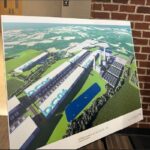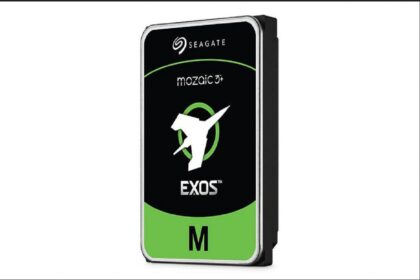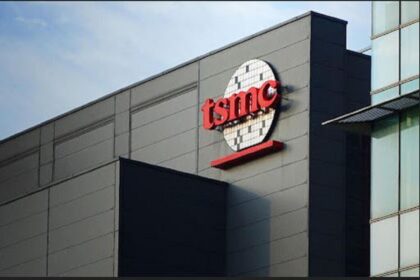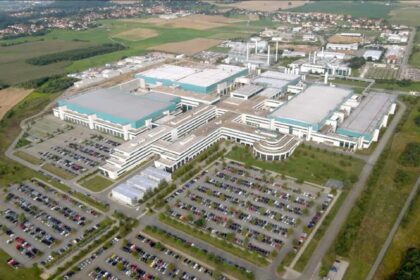Jensen Huang, CEO of Nvidia, recently highlighted how the company’s hardware innovations are progressing at a pace faster than the limits outlined by Moore’s Law. In an interview with TechCrunch at the Consumer Electronics Show (CES), Huang stated, “Our systems are progressing way faster than Moore’s Law.” This assertion reflects Nvidia’s belief that the rapid advancements in AI chips are outstripping the traditional pace of semiconductor evolution.
Moore’s Law, coined by Intel co-founder Gordon Moore in 1965, suggests that the number of transistors on chips doubles approximately every two years, leading to performance improvements and cost reductions. However, as the industry approaches the physical limits of chip miniaturization, the law’s relevance has increasingly been questioned.
Moving Beyond Moore’s Law: Nvidia’s New Approach
Huang explained that Nvidia’s strategy is built around simultaneous innovation across multiple areas—architecture, chips, systems, libraries, and algorithms. He believes this integrated approach allows the company to innovate more quickly than Moore’s Law would permit. By advancing all components of the computing stack in tandem, Nvidia is pushing the boundaries of performance in ways traditional chip development cannot match.
The traditional model of focusing solely on transistor density has encountered significant challenges as manufacturers struggle to shrink chips further. Instead, Huang argues that optimizing the entire system offers a way to accelerate progress. This holistic approach is allowing Nvidia to break free from Moore’s Law and deliver faster, more powerful AI solutions.
The End of Moore’s Law: Huang’s Perspective
While Huang did not explicitly repeat his 2022 declaration that Moore’s Law is “dead,” his comments in the TechCrunch interview clearly suggest the industry has surpassed its constraints. He described how the improvements in AI chip performance are now driving a reduction in the cost of inference, echoing his earlier statement that the AI sector is experiencing what he calls “hyper Moore’s Law.”
In Huang’s view, the traditional metrics of Moore’s Law, which focused on transistor growth, are no longer the primary drivers of technological progress. Instead, Nvidia’s focus on AI-specific optimizations has enabled a new era of computing performance, where inference tasks, crucial for AI applications, are becoming significantly more efficient and cost-effective.
Nvidia’s AI Chips: 1,000x Faster Over the Past Decade
One of the most compelling claims made by Huang is that Nvidia’s AI chips have seen an astonishing 1,000x improvement in performance over the last decade. While he did not provide specific metrics to support this assertion, the claim underscores the scale of transformation Nvidia has driven in the AI hardware space. This level of improvement indicates a dramatic leap forward in computational power, particularly for AI applications like machine learning, deep learning, and inference.
This advancement is in stark contrast to the performance increases seen in traditional CPUs, which have struggled to keep pace with the demands of modern AI workloads. As AI continues to push the limits of computational requirements, Nvidia’s GPUs have become the go-to solution for powering next-generation AI systems.
Huang’s Law: A New Standard for GPU Advancements
In 2018, Huang introduced “Huang’s Law,” a concept that suggests Nvidia’s GPUs are advancing far faster than traditional CPUs. He noted that Nvidia’s GPUs had become 25 times faster over five years, a performance boost that would have been impossible under the traditional expectations of Moore’s Law.
This observation is particularly important in the context of AI workloads. GPUs are inherently better suited for the parallel processing needs of AI and machine learning tasks, which is why Nvidia’s products have achieved such significant performance improvements. Huang’s Law underscores the rapid evolution of GPU technology and the growing gap between Nvidia’s innovations and traditional computing paradigms.
The Future of AI Hardware: What’s Next for Nvidia?
Looking forward, Nvidia’s relentless pace of innovation shows no signs of slowing. With AI becoming an integral part of industries ranging from healthcare to finance, the demand for more powerful, efficient, and scalable hardware will only increase. Nvidia’s ability to deliver cutting-edge GPUs that outpace traditional chip technologies positions the company at the forefront of this transformative period in computing.
By continuing to develop AI-specific hardware that drives down the cost of inference and boosts processing power, Nvidia is setting the stage for a new era of AI-driven applications.
FAQ Section
1. How is Nvidia surpassing Moore’s Law?
Nvidia is outpacing Moore’s Law by innovating across the entire computing stack—architecture, chips, systems, libraries, and algorithms—rather than focusing solely on transistor density. This holistic approach allows the company to deliver faster performance than Moore’s Law would suggest.
2. What is “Huang’s Law”?
Huang’s Law, coined by Nvidia CEO Jensen Huang, refers to the observation that Nvidia’s GPUs are evolving much faster than traditional CPUs, with performance increases that far exceed what Moore’s Law predicts.
3. What does the 1,000x improvement in Nvidia’s AI chips mean?
The 1,000x improvement in Nvidia’s AI chips refers to a dramatic increase in performance over the past decade, positioning Nvidia’s GPUs as the leading solution for AI workloads.
4. What is “hyper Moore’s Law”?
“Hyper Moore’s Law” is a term used by Huang to describe the accelerated pace of innovation in AI hardware, which he believes is surpassing the traditional limitations set by Moore’s Law.
5. Are traditional CPUs still relevant for AI workloads?
Traditional CPUs are struggling to keep up with the demands of modern AI workloads, which require parallel processing capabilities that are better suited for GPUs. Nvidia’s GPUs have become the preferred choice for AI and machine learning tasks.


















